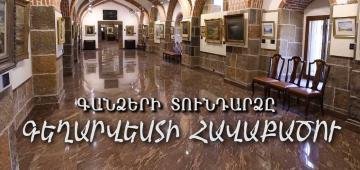 |
Treasures Returning: A Fine Art CollectionThe Mother See of Holy Etchmiadzin is not only a spiritual center, but also an exceptional repository of works of art. The painting collection of the Mother See was formed during the reign of Hovhannes VIII Karbetsi, at the beginning of the 19th century, and with the patronage and efforts of His Holiness Karekin II, it was replenished with 436 cultural values. The painting collection of the Mother See was replenished not only with works of Armenian classical, but also with works of contemporary artists. |
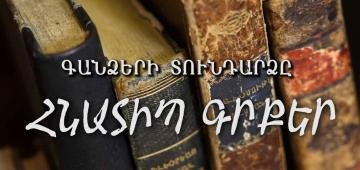 |
The Return of Treasures: Antique Books
On the direct initiative of His Holiness Karekin II, Catholicos of All Armenians, the Karekin I Educational Center was established, based on the personal book collections of Catholicos Vazgen I, Karekin I, and Karekin II. The antiquarian collection was formed in parallel with the collection that already existed in the Mother See. Currently, there are two collections of antiquarian books in Holy Etchmiadzin. In total, before the enthronement of His Holiness the Patriarch, the Mother See had approximately 2,000 units of antiquarian literature. Over the past 25 years, the two collections have been replenished with approximately 960 units.
In 2021, the Matenadaran was established in the Mother See. A magnificent new building was built under the direction of His Holiness Karekin II. The two-story building houses the book depositories and auxiliary rooms, the administrative part, the reading room, including the reading room for antiquarian books. The collection of antiquities kept in the Matenadaran of the Mother See has 703 specimens, 620 of which arrived in Etchmiadzin during the reign of Catholicos Karekin II.
|
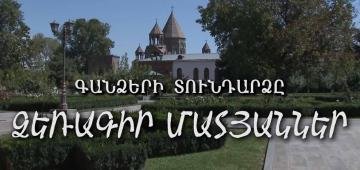 |
The Return of Treasures: ManuscriptsThe manuscript collection of Holy Etchmiadzin has been replenished with 123 manuscripts through the efforts of Karekin II, Catholicos of All Armenians. Now the manuscript collection of the Mother See is the second largest in Armenia after the Mashtotsyan Matenadaran. After the renovation of the Holy See, special cabinets were installed by special order of His Holiness, where the manuscripts of the Mother See are carefully collected. They are not only kept in the manuscript collection, but also exhibited in the museums of the Mother See, participating in exhibitions taking place in Armenia and the Diaspora. |
 |
Return of the treasuresThrough the mediation and administration of His Holiness Karekin II, Catholicos of All Armenians, 32 reliquaries have been brought to Holy Etchmiadzin in the last quarter of a century: right-shaped, cross-reliquaries, and reliquary vaults. They contain relics of the Armenian Apostolic Church and pan-Christian saints. In 25 years, the treasury of the Mother See's relics has been enriched with rare and exclusive relics. |
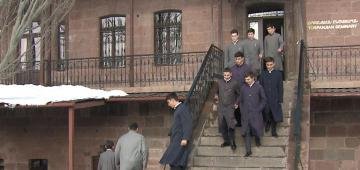 |
Gerald TrbanjianDuring the years of Armenia's independence, the name of a benefactor whose attention was especially focused on education was written in golden letters. Gerald or Jerry Trbanjian. Few people in Armenia have seen him, but they know him and are grateful. Thousands of parents, whose children received education through the Trbanjian family's generosity, have blessed him and sent him their best wishes. |
 |
Identity stamp
Holy Etchmiadzin is the first state-built sanctuary in the Christian world, the first central-domed cross-shaped church in the pan-Christian culture. The construction of the Mother Cathedral was completed in 303. The church has seen numerous disasters, renovations and reconstructions.
The major renovation of the Mother Cathedral of Holy Etchmiadzin, completed in 2024, was the most extensive in modern history. It began with the foundations of the cathedral and ended with the two-pointed cross on the main dome. More than 2,600 square meters of frescoes were restored.
|
 |
Christmas concert program"Shoghakat" presents a festive concert program with performances by Armenian choirs and orchestras on the occasion of Christmas. |
 |
Clay angels, bellsPotter Tatev Ghaltakhchyan believes that angels have auspicious meaning for Christmas, and they herald peace and good news, while bells represent a new beginning. She creates all the symbols of Christmas using clay: bells, candles, angels, and fir trees. |
 |
New Year hutsLiana Hayrapetyan makes breathing New Year's huts out of wood. The author believes that her New Year's huts are like fairy tales. According to her, they convey peace, tranquility, security, and warmth. The author is convinced that people live in huts because there is always a lamp burning inside, which gives light, love, and warmth. |
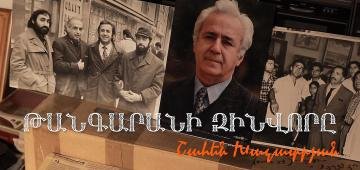 |
Museum soldier-Shahen Khachatryan
This year marks the 90th anniversary of the birth of Shahen Khachatryan, Honored Artist of the Republic of Armenia, who directed the Martiros Saryan House-Museum for about 38 years and the National Gallery of Armenia for 11 years. The film tells the details of the art critic’s life and activities, how he was beaten at school for reciting Charents, then became a swimming champion and only years later returned to culture. The film contains exclusive episodes about the closeness between Shahen Khachatryan and Martiros Saryan, the Master’s appointment of him as the director of the museum and the granting of a unique honorary title.
|
 |
"Golden generation" summer camp
From June 11 to July 7, the "Miasin" NGO organized a "Golden Generation" socio-educational summer camp in Tsaghkadzor for people aged 63-79 who were forcibly displaced from Artsakh. The purpose of the program is to draw the public's attention to the problems of the elderly, to provide social-psychological support, to contribute to their healthy lifestyle, and to organize a useful and interesting daily routine. The project was implemented through the "Mission Armenia" charitable non-governmental organization and with the financing of the Office of the United Nations High Commissioner for Refugees.
|
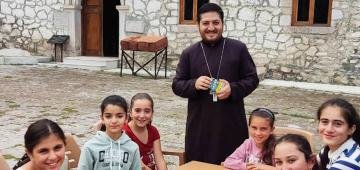 |
Rev. Fr. Benjamin Tsaturyan, the priest displaced from ArtsakhReverend Fr. Benjamin Tsaturyan went through war, siege and exile with the people of Artsakh. Now he has joined the service in the Masyatsotn Diocese. The topic of the family's daily conversations is Artsakh, their native Astghashen, from which they were forced to leave the entire village in one day. |
